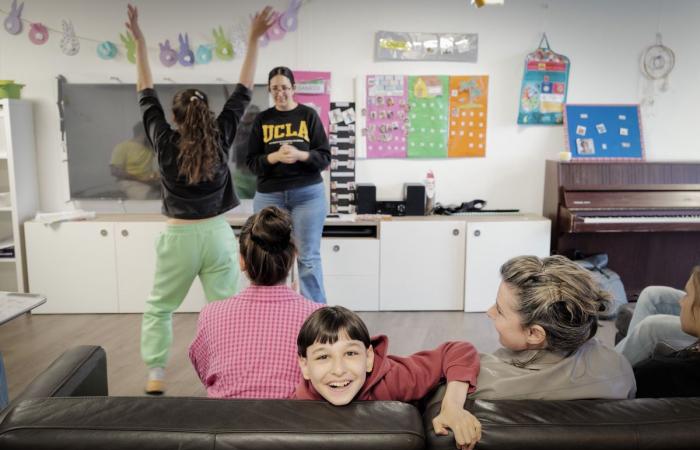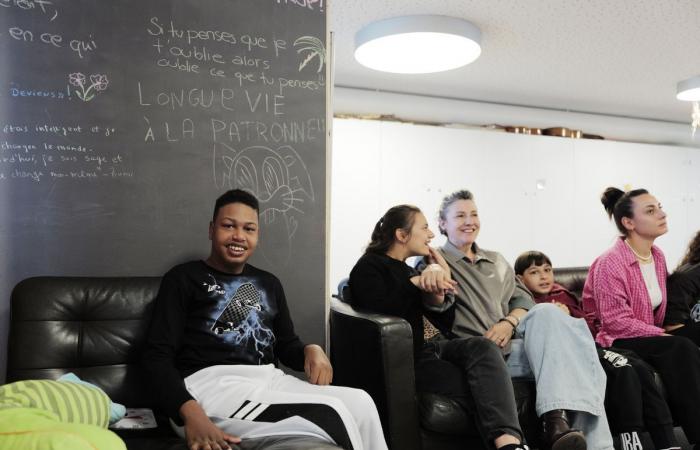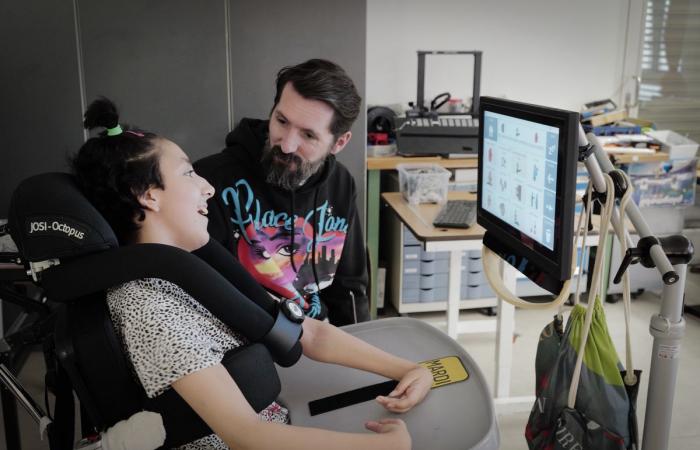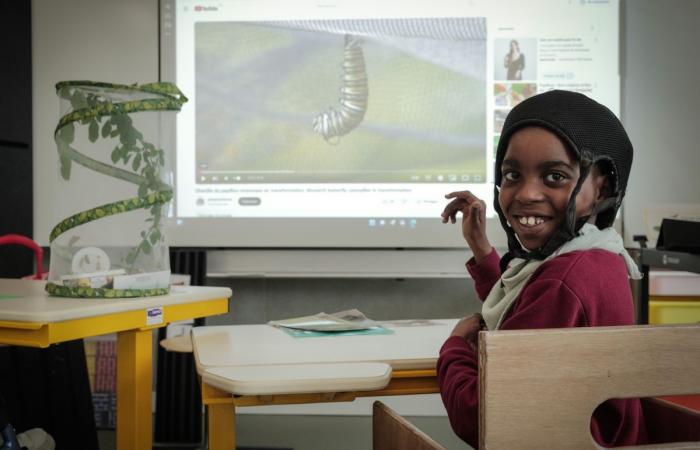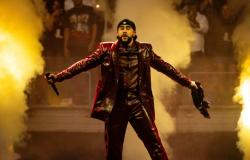ThoseTeaching in Geneva –Specialized schools in Clair Bois open their doors to the public
Petit-Lancy and Chambésy establishments welcome children with disabilities. Open doors on Saturday.
Posted today at 7:30 am

Festive atmosphere in a class of the Clair-Bois Foundation, in Petit-Lancy, in preparation for the open doors of May 10 celebrating the 50th anniversary of the institution.
Laurent Guiraud/Tamedia
Subscribe now and take advantage of the audio reading function.
- The Petit-Lancy de Clair Bois school welcomes 78 students with special needs.
- Children communicate thanks to technologies adapted to their capacities.
- The courses are diverse to maximize learning.
- Students participate in classes in the primary school in the Plateau. This makes it possible to promote their integration and also benefits ordinary students.
We are entering the class. Immediately, a child comes to meet us, the outstretched hand. After grabbing our arm, Samir invites us to sit down to his side for the start of the course. Welcome to the specialized school of Clair Bois, in Petit-Lancy, which welcomes students from 8 to 18 years old with disabilities. “Here there are a lot of smiles and giggles,” informs us an educator.
Cumulating several deficiencies – cognitive, motor and communication -, they require a specialized school and are divided into different classes, according to their skills. “They are above all children, with rights, such as being educated,” explains Charly Castandet, executive assistant.
The second school of Clair Bois, located in Chambésy, schooling of younger children. Open doors will take place this Saturday in the two establishments.
A world of child
In addition to class classes, rest rooms or therapy rooms complete the building. Decorated with Easter DIYs and filled with toys, the Petit-Lancy school is certainly adapted to the needs of its young residents, but it resembles all the worlds of children. Besides, a superhero is placed on a desk.
“The 48 beneficiaries of Petit-Lancy are extraordinary,” explains the executive assistant. In both directions of the word! First because with their multiple deficiencies, their development is not “typical”. But also extraordinary because like people, they transmit their joy and smile with transparency. As if everything they feel is immediately shared. Without filter.
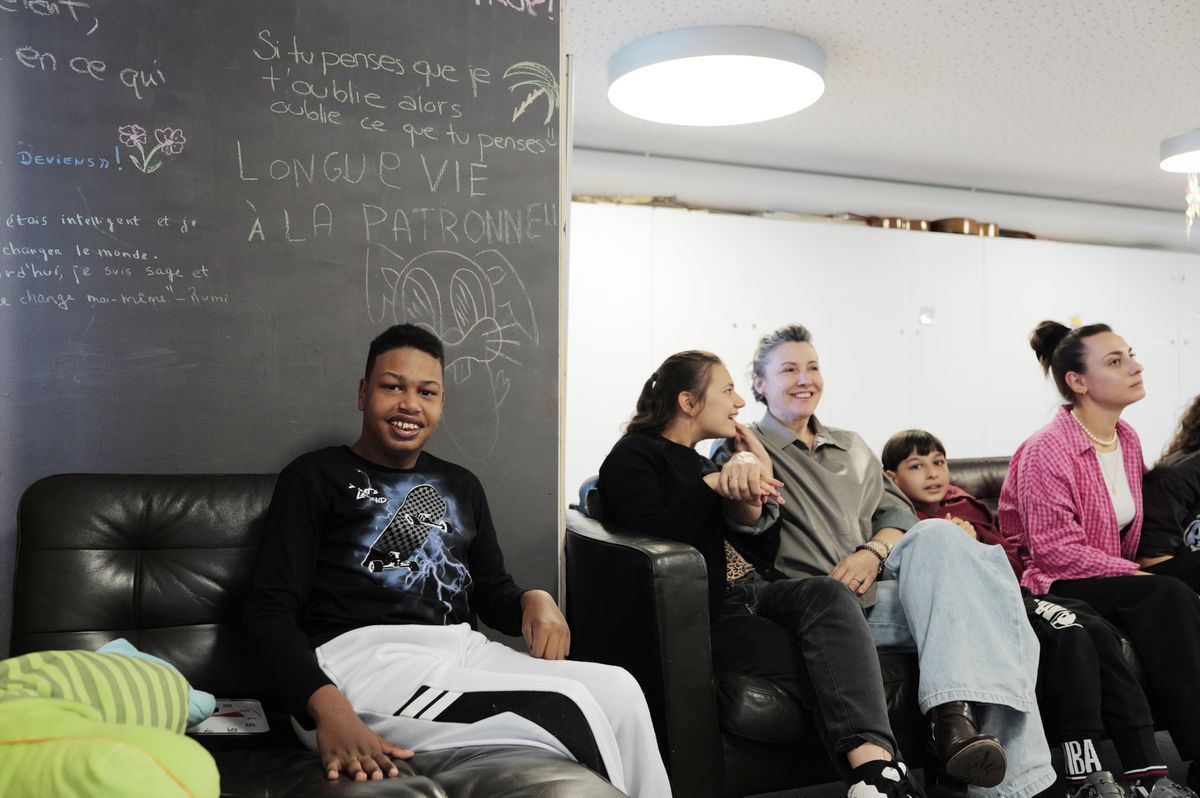
Each morning, educators and the group of children, divided by level of competence, greet themselves in music. Here on the left, Samir, who welcomed us as soon as we arrived.
Laurent Guiraud/Tamedia
Our coming seems to delight them and we take part in the activities.
Awaken the body
The morning begins in song with a signed choreography. “They all have several ways to communicate, so we maximize the channels so that everyone takes what they want,” explains an educator.
Everyone is greeted in turn. Then a sheet representing emotions circulates and the people present indicate their psychic state. Each educator then continues in the morning with a child. Some duos remain in the open space where the lessons take place. Others return to the room, because the beneficiary wishes to be alone or is about to receive care or a toilet.
-Before leaving the room, a student uses an electronic tablet filled with pictograms to communicate. By pressing the screen, he asks his comrade if he can use the fan.
Technology at the service of children
A few floors below is the telethèsis room. Equipped with a gaze tracking device, each child spends forty-five minutes a week with Julien Richard to develop an electronic interface to communicate With its environment: “My goal is to use all possible technologies to put them at the service of children.”
This morning is Rasat, an Afghan girl, who learns new words. “She makes progress very quickly, we went to an interface with more boxes to develop his communication,” explains the professional.
Missenat cannot point or speak. Looking at the different symbols she learns when she came, she can build sentences that are verbalized by the device. During our visit, using her eyes, the child explains that his back scratches him or that she wants to do as our photographer.

RASSANNE takes its telethical course and develops its personalized interface. It will allow him to communicate by looking at the pictogram present on the screen.
Laurent Guiraud/Tamedia
He lets her see by the viewfinder of the aircraft, then his accompanying show him that the eye tracking device can also take photos. Some souvenir photos are made before leaving.
Integrated classes
Our school visit continues a five -minute walk from Clair Bois, at Plateau primary school. Regularly and depending on the child, school learnings take place outside the mother institution. “It is a question of social and school inclusion. These are stimulating environments for our students, who can learn a lot, such as managing their emotions, ”explains the executive assistant.
We meet two students and their specialized teachers. Elan, 8, and Bademba, 10, have just finished a lesson in the syntax of sentences. Now they take a science class: the life cycle of a butterfly.
The two children do not have the same faculties, but similar objectives. “Our goal is that they can transfer their skills to other areas outside the school. Here they approach the concepts of time and grow with the metaphor of chrysalide which becomes a butterfly, “explains the specialized teacher.
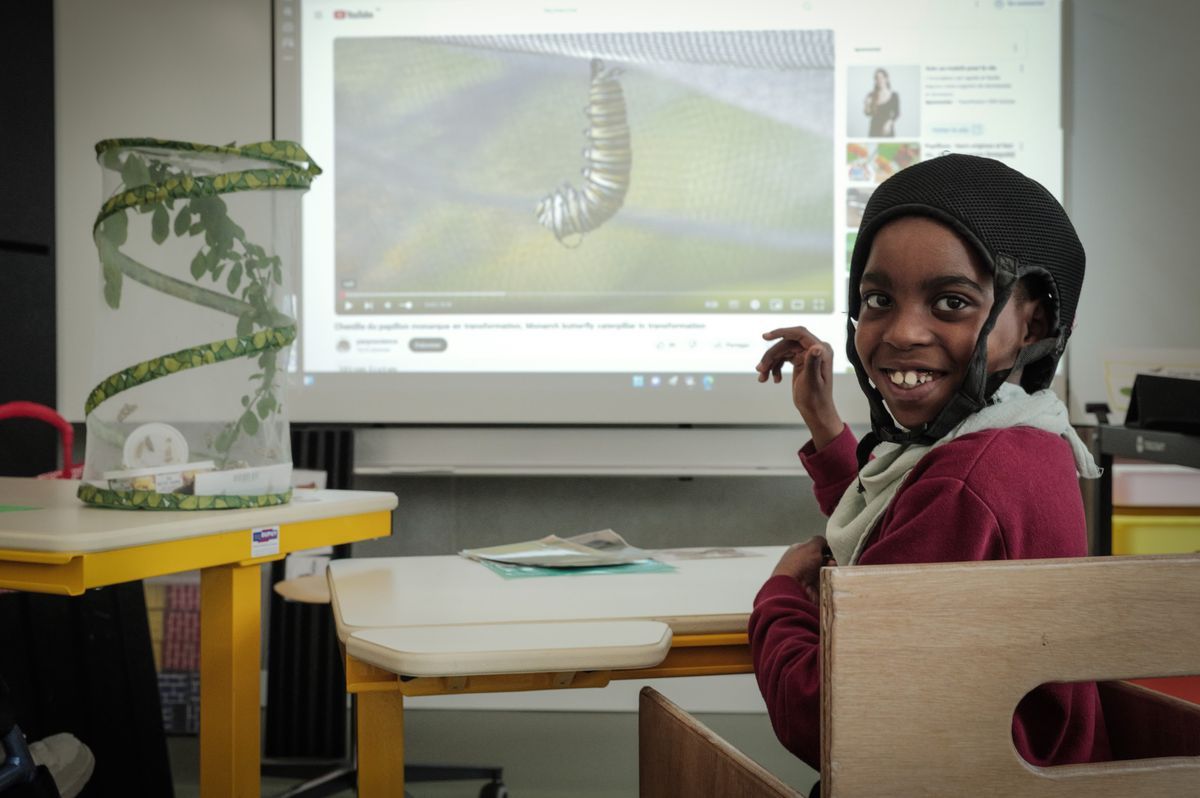
Bademba takes a science class in an ordinary primary school. Sometimes students of Clair-Bois are mixed with others to promote their integration and develop other forms of skills.
Laurent Guiraud/Tamedia
Sometimes light wood students are mixed with others to promote their integration and develop other forms of skills. “This has advantages for everyone,” explains Christelle Pizzera, the specialized teacher of the day. The children are curious and if the difference is presented to them early, they will manage to welcome him with less fear. ”
Did you find an error? Please report it to us.
0 comments


